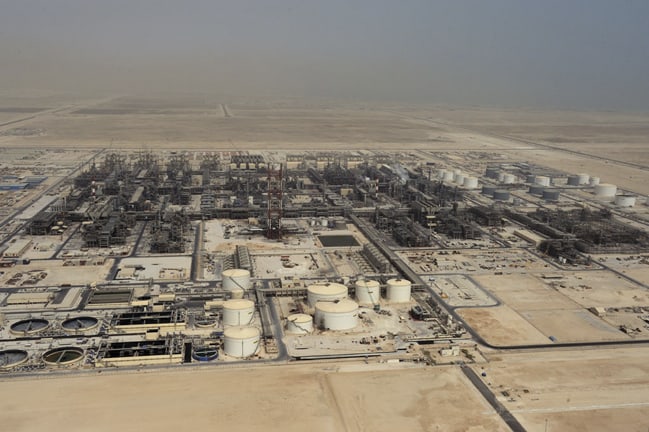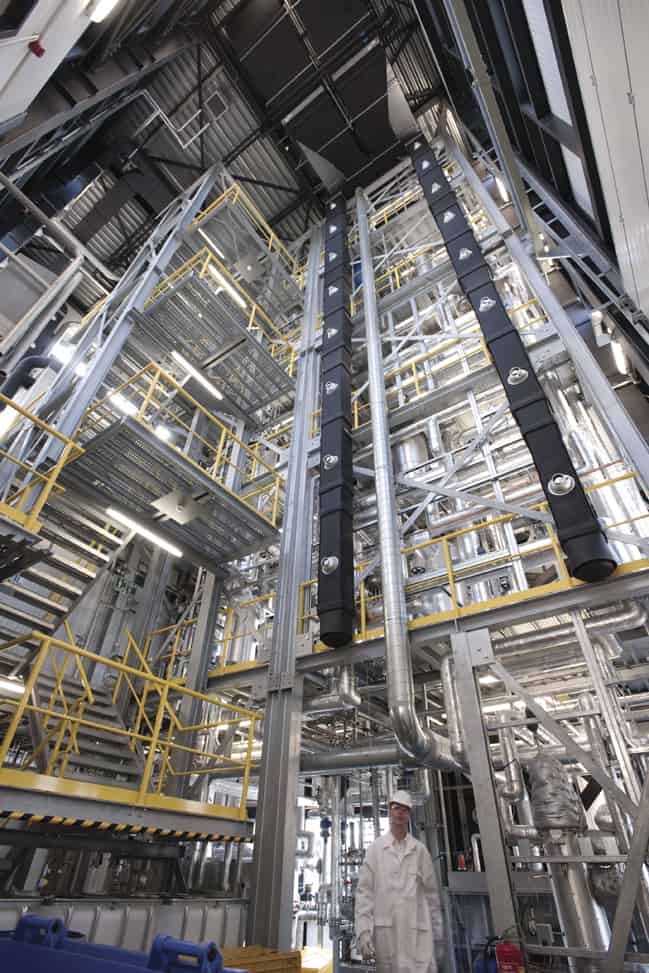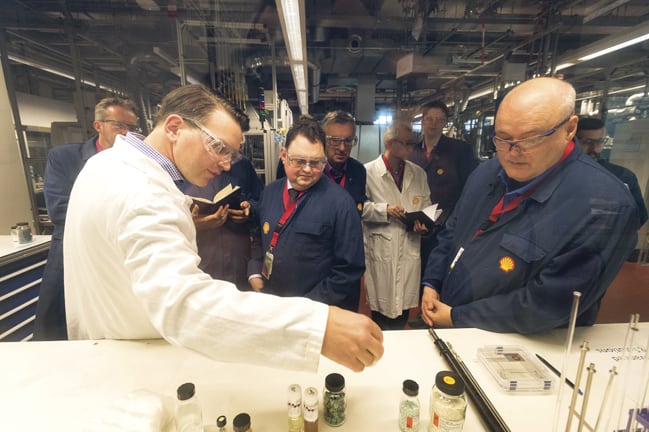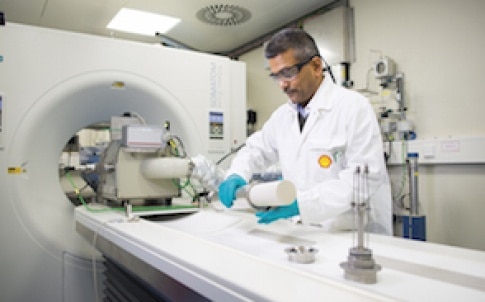
Natural gas is increasingly the hydrocarbon fuel of choice in an ever-wider range of applications. It replaced coal as the main domestic fuel decades ago, even indirectly: cookers fuelled by coal-derived ‘town gas’ were converted to natural gas between 1967 and 1977. Electricity generation using natural gas increased in the 1980s and 1990s as the fuel displaced coal. Shipping is increasingly fuelled by liquefied natural gas (LNG) instead of the heavy oils that dominated the marine fuel market for many years, and LNG is an increasingly popular fuel for commercial vehicles and buses (although it still has a long way to go to displace diesel). It requires engines to be converted and is not available as widely as petrol or diesel, so its take-up in personal car transport has been slow to grow.
The reasons for its popularity are mainly environmental. When it’s burned, methane releases less carbon dioxide per unit of energy than any other hydrocarbon. So, although it does still contribute to greenhouse gas emissions, switching from more carbon-intense fuels to natural gas is often an easy way to reduce emissions without too much trouble. The gains are particularly large when the fuel being replaced is coal, which releases the largest amount of CO2 per joule, 10 times as much as methane; this is why the UK government is particularly keen to phase out coal-fired power stations and replace lost capacity with gas as fast as possible. Energy secretary Amber Rudd announced last year that the coal phase-out would be complete within a decade, with the cut-off point in 2025.
Shell is one of the world’s largest natural gas producers, and recently presented several of its new technologies for extracting and processing natural gas and converting it into other useful hydrocarbons to the media at its technology centre in Amsterdam (STCA). Gleaming and almost intimidatingly spotless, STCA is a reminder that even in the petrochemical industry, engineering isn’t always grimy.
According to Shell’s manager for gas conversions, Jan van Schijndel, there are sufficient gas resources left for 235 years of supply, allowing for some expansion into new applications. Some of these are in well-known regions such as the Middle East; others are in less well-exploited zones. These include the North Atlantic; parts of North Africa, such as Egypt; South Africa; and off Western Australia. The last of these, being very remote from any market, will be where the enormous Floating LNG vessel Prelude will be stationed once it has been fitted out in South Korea. Lacking propulsion, Prelude is not a ship; but is the largest floating structure ever constructed in terms of weight and displaced volume. It will compress the gas from the field to a liquid to make it easier to transport to markets or processing centres.
But gas that comes out of the ground is often unsuitable for use directly, because it isn’t pure. Deriving as it does from the remains of micro-organisms, it also contains traces of the other elements that occurred in their bodies. Some of these trace elements occur in gas in compounds that are corrosive and toxic, such as foul-smelling hydrogen sulphide (H2S).
Shell’s technique for getting rid of sulphur impurities borrows from nature. Developed by a company called Paquell – a joint venture between Shell and Paques, a waste treatment biotechnology specialist – it uses natural microbes that digest H2S and excrete elemental sulphur and water. “These microbes occur very widely,” explained Marja Zonnevylle, general manager for gas processing. “Dredge some mud up from the bottom of any ditch and it’ll have some of these microbes in it. And when you use a mixture of microbes in a process it’ll optimise naturally to the feedstock – the ones best suited to the mixture of impurities in the feed will flourish, so you end up with a very efficient microbe population without having to do anything to it yourself.”
The microbes are housed in a reactor through which gas is bubbled, and clean gas rises to the top while the sulphur excreted by the microbes falls to the bottom. This biosulphur is an off-white colour and tends to clump together, unlike chemically derived sulphur, which is a bright-yellow, free-flowing powder. Biosulphur is easily dispersed in water, Zonnevylle said, making it suitable as an agricultural fertiliser, for which there is a brisk market.

Fuels aren’t the only thing to do with natural gas. Much of the chemical industry is based on hydrocarbons, but there, the feedstock tends to be small molecules with short chains of carbon atoms derived from ‘cracking’ larger molecules, over a catalyst at high temperatures and pressures. This is because carbon-hydrogen bonds are very strong and methane, the main hydrocarbon component of natural gas, is an extremely stable molecule and doesn’t tend to react with anything; all it does is burn.
But Shell specialises in a process that transforms methane into larger organic molecules that can then form the feedstock for other processes. Known as gas-to-liquids (GTL), this is a multi-stage process that begins by partially oxidising methane to convert it into carbon monoxide. Unlike carbon dioxide (the fully oxidised form of carbon, which is even more stable than methane – it doesn’t even burn), carbon monoxide is reactive. In particular, as Martijn van Hardeveld, general manager for GTL conversion, explained, it can be mixed with hydrogen to form a mixture known as synthesis gas or Syngas, and subjected to a reaction known as the Fischer-Tropsch (F-T) process, which removes the oxygen from the carbon atom and replaces it with a chain of hydrogen atoms. These units then join together to form long, linear carbon chains, and more hydrogen atoms cap off the ends of the chains to make stable long hydrocarbons.
The final product is a mixture of heavy hydrocarbon that is molten when it is produced, but solidifies to a wax. Because this is derived from purified methane, it consists only of pure hydrocarbons. It can be cracked in the same way as oil products to make smaller hydrocarbons of tailored molecular weight, some of which can be burned as fuels, generally substituting for diesel; and unlike diesel derived from oil, which is a natural product and contains sulphur impurities or aromatic compounds, which produce sooty particulates when burned, GTL diesel is purely simple hydrocarbon and burns much more cleanly.
Heavier cracker products – again with hydrocarbon molecules of known size – can be used in lubricating oils; once again, they are very clean and free of impurities. Even the solid wax that is the basic GTL product has a small market, in products such as cosmetics and coatings for paper products for the food industry. Other hydrocarbon products are used to make synthetic detergents; still others, plastics.
F-T synthesis isn’t new; it was developed in Germany during the 1920s, and was used extensively in the Second World War to make fuel from the country’s abundant coal resources (Germany has no oil). It was further developed in South Africa, another country with little oil but much coal.
Shell’s interest in GTL began because the company wanted to make use of so-called ‘stranded’ gas, which comes from reserves located a long way from a ready market, and from where transporting it through pipelines or even compressing it into LNG would not be economic. It has devoted considerable resources into refining its cobalt-based F-T catalyst, testing many related compounds to find the right structure to speed up the reactions that make the desired products.
Catalyst research is done using a similar technique to one developed for the pharmaceutical industry. Known as combinatorial chemistry, it uses miniaturised flow devices to direct feedstock gases into small tubes packed with catalyst-bearing beads, tubes or particles. The product stream from each tube is analysed separately, but the time saved by running the experiments simultaneously allows Shell to test very large numbers of related compounds in a short time, explained Hendrik Dathe, research manager for refinery catalysts.

These catalysts are tested using a natural gas feed in the pilot plant laboratory at the STCA, before the process is scaled up for use at the enormous Pearl GTL plant in Qatar and a smaller one in Bintulu, Malaysia, the world’s first fully integrated GTL plant, opening in 1993.
Pearl is the world’s largest GTL plant. Jointly owned by Shell and the Qatari state-owned petrochemical company, it converts 45 million cubic metres of natural gas every day into 22bn litres of liquid hydrocarbons. Estimates of its cost vary to as high as £24bn and it is believed to be economic as long as the oil price is above around US$40/barrel.
Scaling up chemical reaction is a tricky problem; what works in a laboratory can behave differently in an enormous tank. But Shell has a more foolproof method. The reaction is tested at pilot-plant scale in a reactor whose form is a tube, around 2.5cm in diameter, packed with catalyst supported on ceramic beads and heated by steam. Van Hardeveld said: “To scale it up, we simply bundle many of these tubes together in a single vessel, with steam running in the spaces between the tubes to get them to the temperature we need – between 200° and 300°C. Each tube behaves exactly like the single-tube set-up in the pilot plant.”
In depth – CT scanning and the recovery of oil
Gas is, of course, only one of the hydrocarbons Shell extracts; it devotes just as much resource to technologies to recover oil. One of the tools it uses to help with that task is the world’s largest vertical computerised tomography (CT) scanner.
The main application for this piece of equipment, which occupies its own lofty space in the STCA and weighs 60 tonnes, is to investigate core samples taken from oil wells to see how well oil flows through the rock. According to Axel Makurat, team leader for rock and fluids, this is a particularly valuable technique when water or fluid mixtures are being injected into the oil well for enhanced oil recovery techniques.

The geology where oil tends to be found is either sandstone or chalk, both of which contain very different connected networks of pores or fissures that contain the hydrocarbon and through which it flows on its way to the surface. Originally, when Shell’s scientists first had the idea of using CT scanning to investigate the behaviour of oil in rocks, the company simply bought a medical CT scanner and used it to study oil flowing through a short (typically around 30cm long) section of core sample – of the similar geology to the region of interest, although not necessarily actually taken from the precise location – which was placed inside the scanner in the same way that a human patient might be.
Although this did provide some valuable information, Makurat said, there were two big problems: the sample was placed into the scanner horizontally and oil was pumped through it from one end to another. This is not what happens in real wells, where the oil is pushed upwards against gravity, either by its own pressure within the reservoir, or by the pressure of the enhanced oil recovery (EOR) fluids. In the medical scanner tests, the oil tended to creep along the bottom edge of the sample in response to the gravity in its orientation. Moreover, the small size of the core sample inside the scanner made it rather difficulty to extrapolate the results to the size of an entire oil well, which can be many hundreds of metres or even kilometres deep inside the reservoir geology.
To get a more accurate and extrapolatable set of results, the company decided to invest in a vertical CT scanner. Although this works in exactly the same way as the medical system, scanning a series of slices through the core sample along its length to show how the front of the oil surge develops and progresses through the rock, the core sample can now be up to 3m long, placed vertically in the scanner, which moves up and down, and the slices are oriented horizontally rather than vertically. The scanner is six times larger than a medical system. The oil or oil/EOR fluid mixture rises up the column of the core sample, as it does in a real reservoir, and the longer length means the behaviour of the hydrocarbon is much closer to what happens in an oil reservoir.
The CT scanner system produces X-rays through an electrical process, rather than using a radioactive source material; this helps with safety, as the system only produces X-rays when it’s switched on, according to Makurat.




Red Bull makes hydrogen fuel cell play with AVL
Many a true word spoken in jest. "<i><b>Surely EVs are the best solution for motor sports</b></i>?" Naturally, two electric motors demonstrably...